Bubonic Plague Here I Go Killing Again Meme
/https://tf-cmsv2-smithsonianmag-media.s3.amazonaws.com/filer/wild-hogs-running-631.jpg)
About 50 miles east of Waco, Texas, a 70-acre field is cratered with holes upward to five anxiety broad and 3 anxiety deep. The roots below a huge oak tree shading a creek have been dug out and exposed. Grass has been trampled into paths. Where the grass has been stripped, saplings oversupply out the pecan trees that provide nutrient for deer, opossums and other wildlife. A farmer wanting to cut his hay could barely run a tractor through here. There's no mistaking what has happened—this field has gone to the hogs.
"I've trapped 61 of 'em downwardly here in the last month," says Tom Quaca, whose in-laws have endemic this land for about a century. "But at least nosotros got some hay out of hither this yr. First fourth dimension in 6 years." Quaca hopes to flatten the earth and crush the saplings with a bulldozer. And then mayhap—maybe—the hogs volition move onto side by side hunting grounds and he can in one case over again use his family unit's land.
Wild hogs are amongst the well-nigh destructive invasive species in the United States today. Two million to six one thousand thousand of the animals are wreaking havoc in at least 39 states and four Canadian provinces; half are in Texas, where they practice some $400 million in damages annually. They tear up recreational areas, occasionally even terrorizing tourists in land and national parks, and squeeze out other wildlife.
Texas allows hunters to kill wild hogs year-round without limits or capture them alive to take to slaughterhouses to exist processed and sold to restaurants as exotic meat. Thousands more than are shot from helicopters. The goal is not eradication, which few believe possible, but control.
The wily hogs seem to thrive in virtually any weather condition, climate or ecosystem in the state—the Pineywoods of e Texas; the southern and western brush country; the lush, rolling central Colina Land. They are surprisingly intelligent mammals and evade the best efforts to trap or kill them (and those that have been unsuccessfully hunted are even smarter). They accept no natural predators, and there are no legal poisons to apply against them. Sows begin breeding at six to viii months of age and accept two litters of four to 8 piglets—a dozen is not unheard of—every 12 to 15 months during a life span of 4 to 8 years. Even porcine populations reduced by 70 percent return to total strength within ii or 3 years.
Wild hogs are "opportunistic omnivores," meaning they'll consume most anything. Using their extra-long snouts, flattened and strengthened on the end by a plate of cartilage, they can root every bit deep every bit 3 feet. They'll devour or destroy whole fields—of sorghum, rice, wheat, soybeans, potatoes, melons and other fruits, nuts, grass and hay. Farmers planting corn have discovered that the hogs go methodically down the rows during the nighttime, extracting seeds one by one.
Hogs erode the soil and muddy streams and other h2o sources, perhaps causing fish kills. They disrupt native vegetation and get in easier for invasive plants to take hold. The hogs claim whatever food set out for livestock, and occasionally swallow the livestock every bit well, specially lambs, kids and calves. They likewise swallow such wildlife every bit deer and quail and feast on the eggs of endangered sea turtles.
Because of their susceptibility to parasites and infections, wild hogs are potential carriers of disease. Swine brucellosis and pseudorabies are the most problematic considering of the ease with which they can be transmitted to domestic pigs and the threat they pose to the pork manufacture.
And those are only the issues wild hogs cause in rural areas. In suburban and even urban parts of Texas, they're making themselves at home in parks, on golf courses and on able-bodied fields. They care for lawns and gardens similar a salad bar and tangle with household pets.
Hogs, wild or otherwise, are not native to the United States. Christopher Columbus introduced them to the Caribbean area, and Hernando De Soto brought them to Florida. Texas' early on settlers allow pigs roam free until needed; some were never recovered. During wars or economical downturns, many settlers abandoned their homesteads and the pigs were left to fend for themselves. In the 1930s, Eurasian wild boars were brought to Texas and released for hunting. They bred with free-ranging domestic animals and escapees that had adjusted to the wild.
And all the same wild hogs were barely more than than a marvel in the Lone Star State until the 1980s. It'due south only since and then that the population has exploded, and not entirely considering of the animals' intelligence, adaptability and fertility. Hunters found them challenging prey, and then wild squealer populations were nurtured on ranches that sold hunting leases; some captured hogs were released in other parts of the land. Game ranchers gear up out feed to attract deer, but wild hogs pilfered it, growing more fecund. Finally, improved fauna husbandry reduced disease amongst domestic pigs, thereby reducing the incidence amid wild hogs.
Few purebred Eurasian wild boars are left today, just they have hybridized with feral domestic hogs and continue to spread. All are interchangeably called wild or feral hogs, pigs or boars; in this context, "boar" tin can refer to a male or female. (Technically, "feral" refers to animals that can exist traced dorsum to escaped domestic pigs, while the more than extensive "wild" refers to any non-domestic animals.) Escaped domestic hogs arrange to the wild in but months, and within a couple of generations they transform into scary-looking beasts every bit mean as can be.
The departure between domestic and wild hogs is a affair of genetics, experience and surroundings. The animals are "plastic in their physical and behavioral makeup," says wild squealer expert John Mayer of the Savannah River National Laboratory in South Carolina. Virtually domestic pigs have sparse coats, but descendants of escapees grow thick bristly pilus in cold environments. Nighttime-skinned pigs are more probable than pale ones to survive in the wild and pass along their genes. Wild hogs develop curved "tusks" as long equally seven inches that are actually teeth (which are cut from domestics when they're built-in). The 2 teeth on top are called whetters or grinders, and the two on the bottom are called cutters; continual grinding keeps the latter deadly sharp. Males that achieve sexual maturity develop "shields" of dense tissue on their shoulders that abound harder and thicker (upwards to ii inches) with age; these protect them during fights.
Wild hogs are rarely as big equally pen-leap domestics; they average 150 to 200 pounds as adults, although a few reach more than 400 pounds. Well-fed pigs develop big, wide skulls; those with a limited diet, as in the wild, grow smaller, narrower skulls with longer snouts useful for rooting. Wild pigs have poor eyesight but good hearing and an acute sense of smell; they can observe odors up to seven miles abroad or 25 feet clandestine. They can run 30 miles an hr in bursts.
Adult males are solitary, keeping to themselves except when they breed or feed from a mutual source. Females travel in groups, called sounders, unremarkably of ii to 20 but upwardly to 50 individuals, including one or more sows, their piglets and maybe a few adoptees. Since the only matter (besides food) they cannot exercise without is h2o, they make their homes in bottomlands most rivers, creeks, lakes or ponds. They prefer areas of dumbo vegetation where they can hide and find shade. Because they have no sweat glands, they wallow in mudholes during the hot months; this non just cools them off but also coats them with mud that keeps insects and the worst of the sun's rays off their bodies. They are mostly nocturnal, 1 more reason they're difficult to hunt.
"Look up there," exclaims Brad Porter, a natural resource specialist with the Texas Parks and Wild animals Department, as he points upward a dirt road cutting across Cow Creek Ranch in s Texas. "That'south hog-hunting 101 right at that place." As he speaks, his hunting partner'south 3 dogs, who'd been trotting alongside Porter's pickup truck, streak through the twilight toward seven or eight wild hogs breaking for the brush. Porter stops to allow his ain ii dogs out of their pens in the bed of the pickup and they, too, are off in a flash. When the truck reaches the expanse where the pigs had been, Porter, his partner Andy Garcia and I hear frantic barking and a low-pitched sighing audio. Running into the brush, nosotros find the dogs accept surrounded a red and blackness wild hog in a clearing. Two dogs have clamped onto its ears. Porter jabs his pocketknife simply behind the hog's shoulder, dispatching it instantly. The dogs back off and quiet down equally he grabs its rear legs and drags it back to his truck.
"He's gonna make proficient eatin'," Garcia says of the dead animal, which weighs most 40 pounds.
The iii,000-acre ranch, in McMullen County, has been in the family unit of Lloyd Stewart's wife, Susan, since the mid-1900s. Stewart and his hunting and wild animals manager, Craig Oakes, began noticing wild hogs on the land in the 1980s, and the animals have become more of a problem every year. In 2002, Stewart began selling hog-hunting leases, charging $150 to $200 for a daylong hunt and $300 for weekends. But wild hogs have go and then common around the country that it's getting hard to attract hunters. "Deer hunters tell us they have a lot of hogs at home," Oakes says, "so they don't want to pay to come up shoot them here." The exception is trophy boars, defined as any wild pig with tusks longer than three inches. These bring effectually $700 for a weekend hunt.
"About of the hogs that are killed hither are killed by hunters, people who will consume them," Stewart says. He'll fly over the ranch to try to count the hogs, merely unlike some landowners who are overrun, he has yet to shoot them from the air. "We're non that mad at 'em even so," Oakes chuckles. "I detest to kill something and not use it."
Many hunters prefer working with dogs. Two types of dogs are used in the hunt. Bay dogs—unremarkably curs such equally the Rhodesian Ridgeback, black-rima oris cur or Catahoula or olfactory property hounds such as the foxhound or Plott Hound—sniff out and pursue the animals. A hog will attempt to abscond, simply if cornered or wounded will likely assault, battering the bay dogs with its snout or goring them with its tusks. (Some hunters outfit their dogs in Kevlar vests.) But if the dog gets right up in the sus scrofa's face while barking sharply, information technology can hold the hog "at bay." Once the bay dogs spring into action, catch dogs—typically bulldogs or pit bulls—are released. Catch dogs catch the bayed sus scrofa, usually at the base of operations of the ear, and wrestle it to the ground, holding it until the hunter arrives to finish information technology off.
Dogs show off their wild-hog skills at bayings, also known as bay trials, which are held most weekends in rural towns beyond Texas. A wild hog is released in a large pen and one or two dogs effort to bay it, while spectators cheer. Trophies are awarded in numerous categories; gambling takes the form of paying to "sponsor" a particular dog and so splitting the pot with cosponsors if it wins. Occasionally bayings serve as fund-raisers for community members in need.
Ervin Callaway holds a baying on the third weekend of every calendar month. His pen is down a rutted dirt road off U.S. Road 59 between the east Texas towns of Lufkin and Nacogdoches, and he's been doing this for 12 years. His son Mike is one of the judges.
"Hither's how information technology works," Mike says every bit a redheaded preteenager preps a cherry-red dog. "The dog has ii minutes in the pen with a hog and starts with a perfect score of 10. We count off any distractions, a tenth of a point for each. If a dog controls the hog completely with his herding instincts, and stares him downwards, it's a perfect bay. If a dog catches a sus scrofa, it's disqualified—we don't want any of our dogs or hogs tore up."
"Sus scrofa out," someone shouts, and a black and white sus scrofa (its tusks removed) emerges from a chute as two barking dogs are released to accuse it. When it tries to move away, a beau uses a plywood shield to funnel information technology toward the dogs. They stop less than a human foot away from the sus scrofa and make center contact, barking until the fauna shoots between them toward the other side of the pen. Every bit the dogs close back in, the hog swerves hard into a contend, so bounces off. The smaller domestic dog grabs its tail but is spun around until information technology lets go. The hog runs into a wallow and sits there. The yellow dog bays and barks, but from maybe three anxiety abroad, too far to be effective, and then it loses concentration and backs off. The pig exits through the chute. Neither domestic dog scores well.
Several states, including Alabama, Mississippi, Due south Carolina and Northward Carolina, have outlawed bayings in response to protests from animal rights groups. Louisiana bars them except for Uncle Earl's Grunter Dog Trials in Winnfield, the nation'south largest. That five-twenty-four hours upshot began in 1995 and draws about x,000 people annually. (The 2010 event was canceled because of disputes amid the organizers.)
But bayings continue to have identify on a smaller scale elsewhere, as do bloodier hog-catch trials in which dogs attack penned-in wild hogs and wrestle them to the ground. The legality of both events is in dispute, but local authorities tend non to prosecute. "The law in Texas is that it'south illegal for a person to cause i animal to fight some other previously wild brute that has been captured," says Stephan Otto, director of legislative affairs and staff attorney for the Creature Legal Defense Fund, a national grouping based in northern California. "But the legal definition of words like 'captured' and 'fight' has never been established. A local prosecutor would have to argue these things, and so far nobody has."
Brian "Pig Homo" Quaca (Tom Quaca's son) paces the floor of his hunting lodge, waving his artillery and free-associating well-nigh hogs he has known. There's the one that rammed his pickup truck; the bluish hog with record-length tusks that he bagged in New Zealand; and the "big 'un" he blew clean off its feet with a burglarize simply to run into the beast get upward and run away. "They're just so smart, that's why I love them," he says. "You can fool deer 50 percent of the time, but hogs'll win 90 percent of the time."
Quaca, 38, began rifle hunting when he was 4 years old only switched to bowhunting at historic period 11. He likes the silence after the shot. "It's only more primitive to utilise a bow, way more heady," he says. As a teen, he eagerly helped neighbors articulate out unwanted hogs. Now he guides hunts at Triple Q Outfitters, a fenced-in section of the property his wife'south family owns. A customer dubbed him Squealer Man, and it stuck. His reputation grew with the launch last twelvemonth of "Grunter Man, the Series," a Sportsman Aqueduct Telly program for which he travels the globe hunting wild hogs and other exotic animals.
Virtually an hour before sunset, Quaca takes me to a blind near a feeding station in the forest. Just as he's getting his high-powered bow ready, a cadet walks into the clearing and begins eating corn; two more are shut behind. "The deer volition come early on to get equally much food equally they can before the pigs," he says. "It's getting close to prime time now."
A slight breeze eases through the blind. "That's gonna let those pigs smell us at present. They probably won't come up virtually." He rubs an olfactory property-neutralizing foam into his peel and hands me the tube. The feeding station is at to the lowest degree 50 yards away, and it's hard to believe our scents can carry that far, let lonely that there'southward a nose precipitous enough to odor them. But as it gets darker, there are withal no hogs.
"Information technology sounds similar a hog might be over around those trees," Hog Human being whispers, pointing to our left. "It sounded like he popped his teeth once or twice. I tin promise you in that location's pigs close by, even if they don't testify themselves. Those deer will stay however long they tin can and never detect u.s.a.. But the pigs are smart."
The darkness grows, and Quaca starts packing to leave. "They won once again," he says with a sigh. I tell him I still can't believe such a balmy breeze carried our scents all the way to the feed. "That'southward why I similar pigs so much," Quaca replies. "If the slightest thing is incorrect—whatsoever tiny piffling affair—they'll get you every time. The sumbitches will get you every time."
The next morn, Tom shows me some flash photographs of the feeding station taken by a sensor camera about a half-hour after we left. In the pictures, a dozen feral pigs of all sizes are chowing down on corn.
To exist sold commercially every bit meat, wild hogs must be taken live to one of most 100 statewide buying stations. One canonical technique for capturing hogs is snaring them with a noose-like device hanging from a contend or tree; considering other wildlife can get captured, the method has fewer advocates than trapping, the other approved technique. Trappers allurement a cage with nutrient meant to attract wild hogs but not other animals (fermented corn, for example). The trapdoor is left open for several days, until the hogs are comfortable with it. Then it's rigged to shut on them. Trapped pigs are then taken to a buying station and from there to a processing constitute overseen past U.South. Department of Agriculture inspectors. According to Billy Higginbotham, a wild fauna and fisheries specialist with the Texas AgriLife Extension Service, 461,000 Texas wild hogs were processed between 2004 and 2009. Most of that meat ends upwards in Europe and Southeast Asia, where wild boar is considered a delicacy, but the American market is growing, too, though slowly.
Wild hog is neither gamy nor greasy, only it doesn't sense of taste like domestic pork, either. It's a bit sweeter, with a hint of nuttiness, and is noticeably leaner and firmer. Boasting ane-3rd less fat, it has fewer calories and less cholesterol than domestic pork. At the LaSalle County Off-white and Wild Hog Cook-Off held each March in Cotulla, 60 miles northeast of the Mexican border, last year's winning entry in the exotic category was wild grunter egg rolls—pulled pork and chopped bell peppers encased in a wonton. But there were far more than entries in the barbecue division; this is Texas, after all.
"There's not much cloak-and-dagger to information technology," insists Gary Hillje, whose team won the 2010 barbecue partitioning. "Get a young female pig—males accept likewise potent a flavor—50 or 60 pounds, before she'due south had a litter, before she'due south half dozen months onetime. Bank check to make certain information technology's healthy; information technology should be shiny and you tin't come across the ribs. Then y'all put the hot coals under it and melt it low and slow."
The LaSalle County Fair also includes wild grunter events in its rodeo. 5-man teams from eight local ranches compete in tests of cowboy skills, though cowboys are rarely required to rope and tie hogs in the wild. "Only nosotros might hunt 1 downwardly, rope it and put it in a cage to fatten it a couple months for a meal," says a grinning Jesse Avila, captain of the winning 2010 La Calia Cattle Company Ranch team.
As the wild hog population continues to grow, Texas' honey-hate human relationship with the beasts veers toward hate. Michael Bodenchuk, director of the Texas Wildlife Services Program, notes that in 2009 the state killed 24,648 wild hogs, nearly half of them from the air (a technique most effective in areas where trees and brush provide little encompass). "Just that doesn't really affect the total population much," he adds. "We become into specific areas where they've gotten out of control and try to bring that local population down to where the landowners can hopefully maintain it."
In the by five years Texas AgriLife Extension has sponsored some 100 programs teaching landowners and others how to identify and control wild hog infestations. "If you don't know how to outsmart these pigs, you're just further educating them," says Higginbotham, who points to a two-year program that reduced the economic impact of wild hogs in several regions by 66 percentage. "Can we hope to eradicate feral hogs with the resources we have at present? Absolutely not," he says. "But we're much further along than nosotros were 5 years ago; we take some good research being done and nosotros're moving in the correct direction."
For case, Duane Kraemer, a professor of veterinary physiology and pharmacology at Texas A&M University, and his squad have discovered a promising birth control compound. Now all they have to do is figure out a style to get wild hogs, and only wild hogs, to ingest it. "Nobody believes that can be done," he says. Tyler Campbell, a wildlife biologist with the USDA'south National Wildlife Research Center at Texas A&G-Kingsville, and Justin Foster, a research coordinator for Texas Parks and Wildlife, are confident there must be a workable poison to kill wild hogs—though, once again, the delivery arrangement is the more vexing issue. Campbell says the employ of poison is at least v to ten years away.
Until then, in that location's a saying common to hunters and academics, landowners and government officials—just about anyone in the Southwest: "In that location's two kinds of people: those that accept wild pigs and those that volition have wild pigs."
John Morthland writes nigh the nutrient, music and regional culture of Texas and the Southward. He lives in Austin. Photographer Wyatt McSpadden also lives in Austin.
Source: https://www.smithsonianmag.com/science-nature/a-plague-of-pigs-in-texas-73769069/
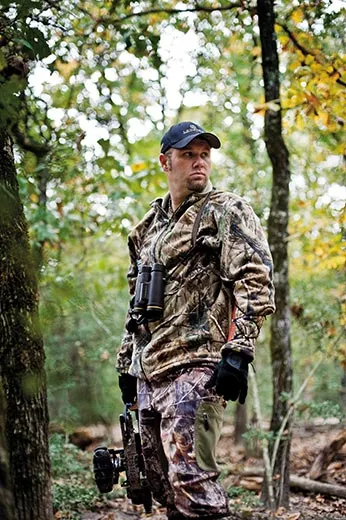
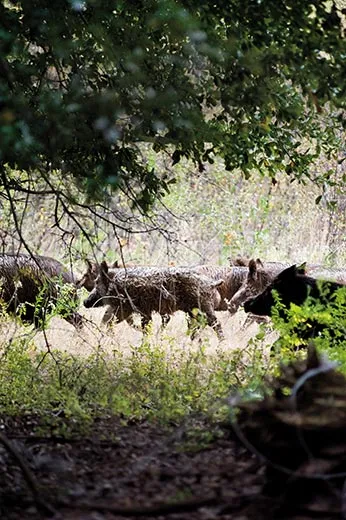
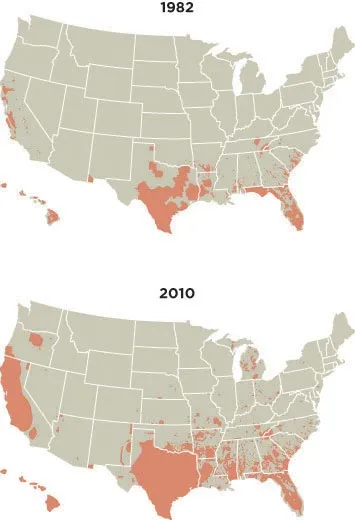
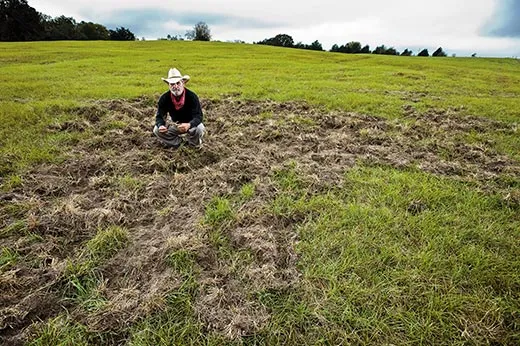
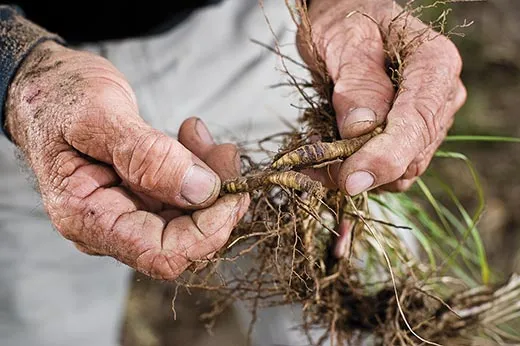
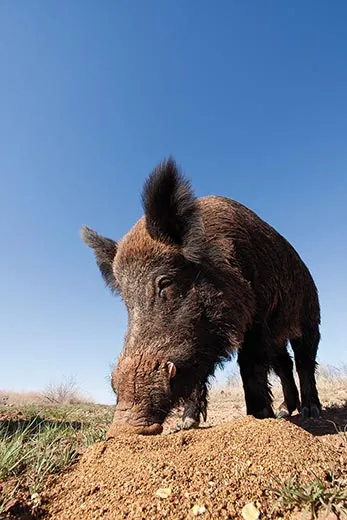

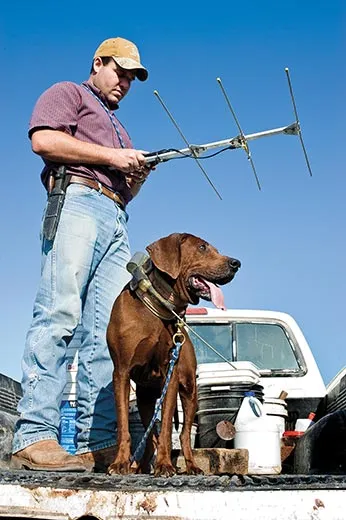
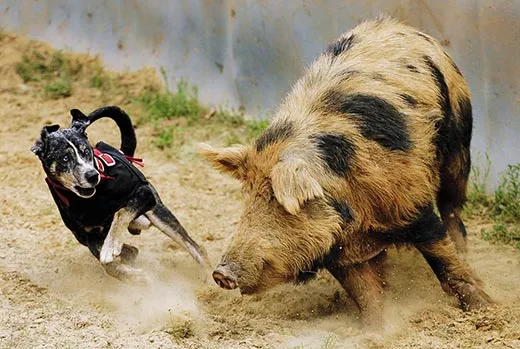
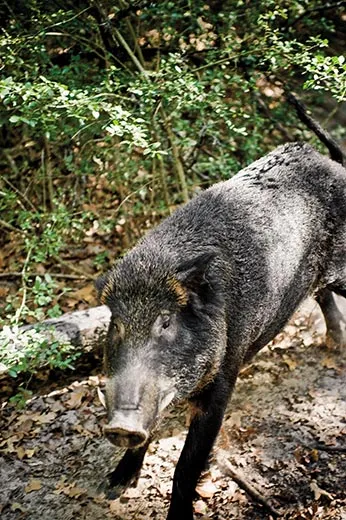
0 Response to "Bubonic Plague Here I Go Killing Again Meme"
Post a Comment